Monday, January 12 marks the five-year anniversary of the 7.0 magnitude earthquake in Haiti. It’s painful to recall. The poorest country in this hemisphere, Haiti was the country least able to handle such a shocking event.
Even before the earthquake, the majority of Haitians faced decades of problems, most of which begin and end in extreme poverty. Poor health and malnutrition, a lack of work opportunities, government corruption and the devastation of Haiti’s natural resources have left few options.
Through partner organizations, LWR has been working in Haiti since 1997 to attack the vicious cycle of poverty there. Scroll down to see just a bit of what LWR has done (not an exhaustive list), and what we continue to do to provide lasting solutions to poverty, injustice and human suffering.
The earthquake caused massive devastation
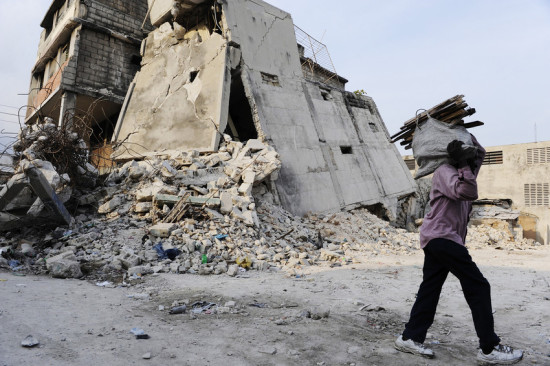
A man walks past destroyed buildings in the historic Grand Rue section of Port-au-Prince, Haiti, six weeks after the earthquake. (Photo by Jonathan Ernst, for LWR)
Nearly 2.3 million people were displaced
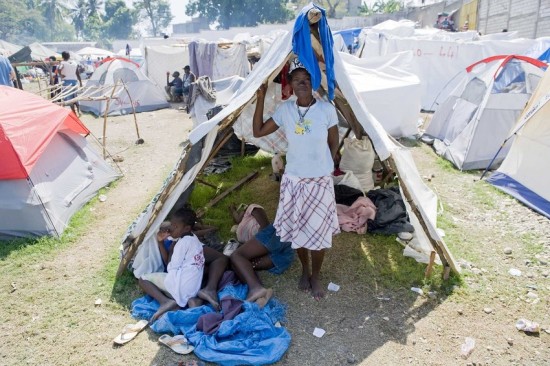
A woman and her family live in a tent community on a soccer field in Jacmel, Haiti. LWR supported cash-for-work programs, latrine-building for sanitation, and basic medical monitoring and treatment training in communities of displaced people. (Photo by Jonathan Ernst for LWR)
You increased Health & Hygiene

Right after the quake, an outbreak of cholera — a potentially fatal intestinal infection — swept across Haiti. The students at Christo Roi de Corail school, just outside Leogane, had not yet been affected by the outbreak. Still, LWR and partners aimed to make sure families knew how to stay safe. Good hygiene is key to staying healthy. That’s why, along with a Personal Care Kit distribution, LWR offered students and their families cholera prevention training. (Photo by Allison Shelley, for LWR)
LWR and our partners built latrines for over 10,000 families, provided health & hygiene training for 10,253 family members, and distributed chlorine, aquatabs and water storage solutions to 2,156 families.

(Photo by Jonathon Ernst, for LWR)
You provided Cash for Work
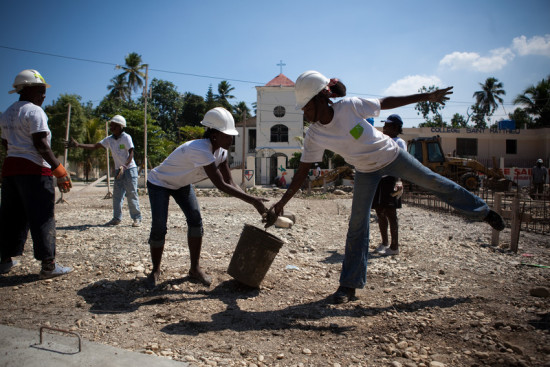
People affected by the earthquake were given cash for doing jobs like soil conservation, road repair, and building water filters and community latrines. (Photo by Allison Shelley, for LWR)
People who participated in the cash-for-work programs said it was a great savior for them. With the money they received, they bought basic food items and some of them purchased seeds to build up their garden.
You helped distribute tools and seeds to farmers

Soamen Jose is a star tomato farmer. In the aftermath of the earthquake, LWR provided farmers like Soamen tools, seeds and cuttings of plants for agriculture, such as sweet potatoes, beans, cassava, and plantains (among others).
LWR also distributed goats and poultry to farmers who could breed them and pass on the gift to others in their community.
You Helped Provide Quilts and Kits
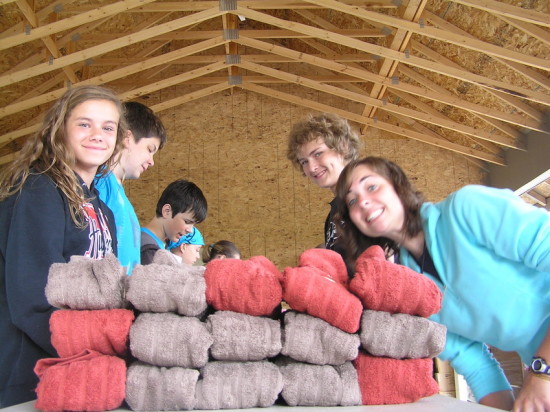
Lutherans around the United States made Quilts and Kits to send to Haiti. The campers at Nebraska Lutheran Outdoor Ministries made 32,000 Personal Care Kits to send to Haiti throughout the summer of 2010.
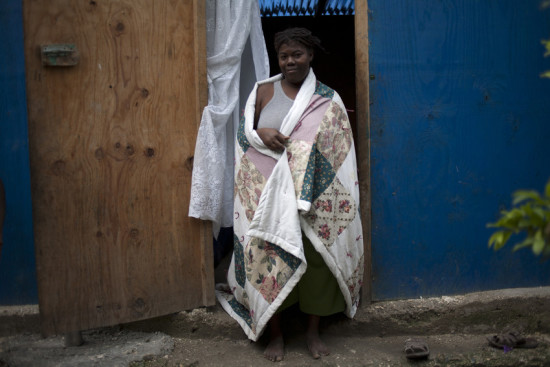
Claudette Gaston shows the Mission Quilt she received from Lutheran World Relief. (Leogane, Haiti)
Lasting Solutions: Coffee and Cocoa
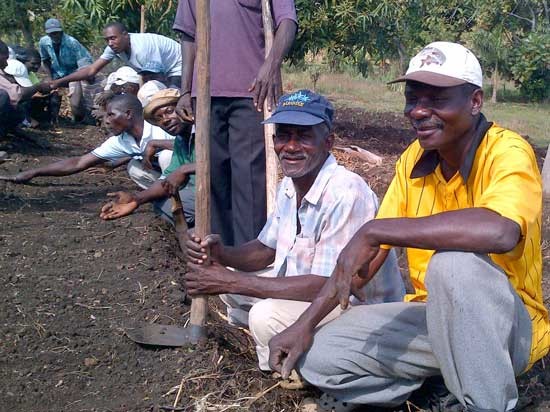
Until the early 1980s, Haiti was among the largest exporters of coffee in the world.
In the five years since the earthquake, LWR is investing in coffee farmers, strengthening their ability to earn a sustainable living.
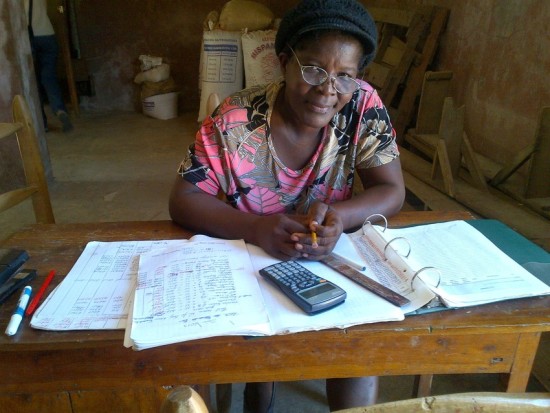
Annelle Papillon is the manager of the local coffee cooperative. She's been doing this job for 4 years, watching the farmers gain more knowledge and better crops.
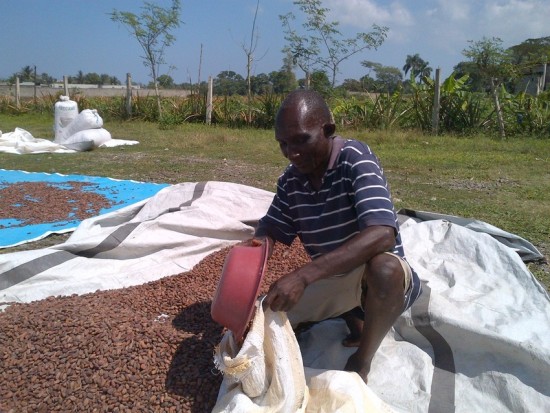
As interest in Haiti’s fine flavor cocoa grows, farmers’ ability to capitalize on growing demand for it is hampered by low productivity, inadequate post-harvest processing that lowers bean quality, and limited capacity of farmer cooperatives to leverage finance and stronger market linkages for members.
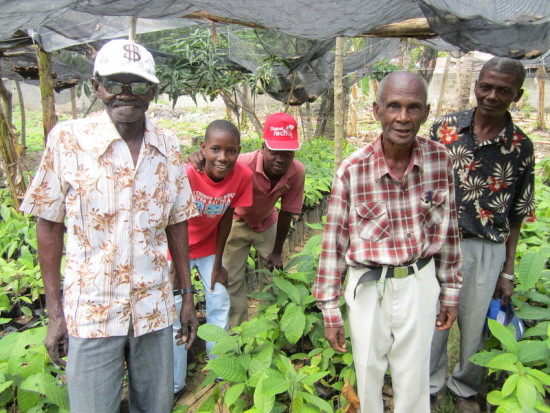
LWR is training cocoa farmers in practices that sustainably increase yields and cocoa quality, and strengthen farmers’ connection to markets and each other for coordinated business practices.
Want to learn more?
Want to learn more about LWR's continuing work to provide lasting solutions to poverty in Haiti? Visit LWR In Depth to read about our ongoing projects there.
Statistics:Haiti Earthquake | ReliefWeb

